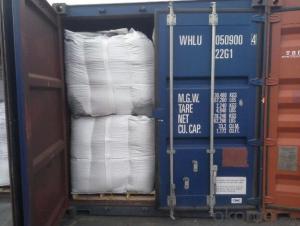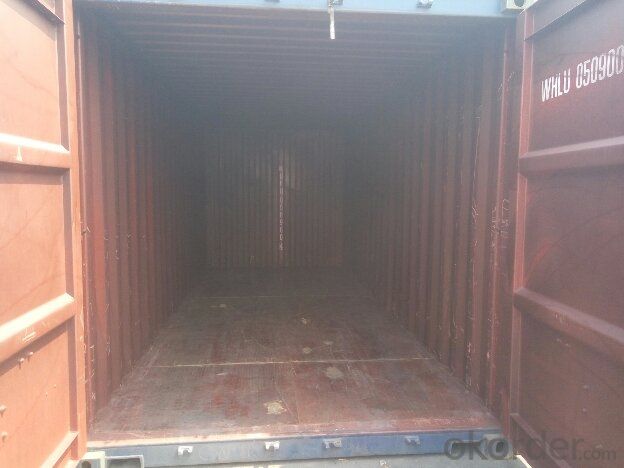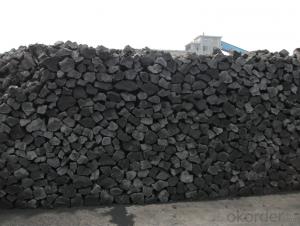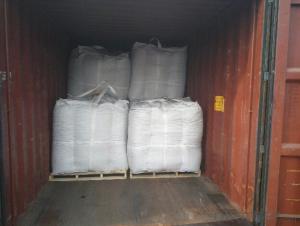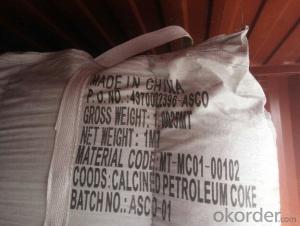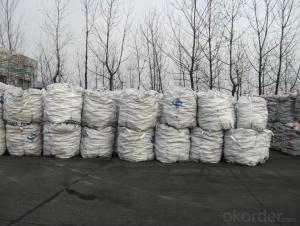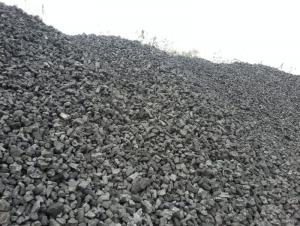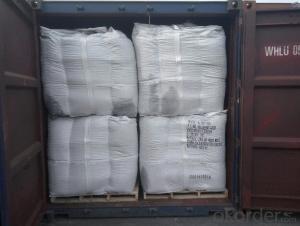Foundry Coke size 80-150MM for Steel Plant
- Loading Port:
- Dalian
- Payment Terms:
- TT OR LC
- Min Order Qty:
- 21.6
- Supply Capability:
- 1016 m.t./month
OKorder Service Pledge
OKorder Financial Service
You Might Also Like
Brief Introduction
Foundry Coke is the main fuel of melting iron in the oven. It can melt the materials in the over, make the iron reach great heat, and keep good air permeability by sustain stock column. Thus, the foundry coke should have the characteristics of big block, low reactivity, small porocity, enough anti-crush strengh, low ash and low sulphur.
The coke handled by our cooperation is made from superior coking coal of Shanxi province. Provided with the advantages of low ash, low sulphur and high carbon. Our coke is well sold in European, American, Japanese and South-east Asian markets. Our owned Coke plant are located in Shanxi Province and supplying of you many kinds of coke.
we supply Foundry Coke long-term, its characteristic is best strength, low sulfur and phosphorus,thermal stability.
Specifications:
ASH % | 8% max | 10% max | 12% max |
V.M.% MAX | 1.5% max | 1.5% max | 2% max |
SULFUR % | 0.65% max | 0.65% max | 0.7% max |
MOISTURE | 5% max | 5% max | 5% max |
Size | 80mm-120mm,80-150,100-150mm, or as request | ||
Features
1. Our quality is always quite good and stable which is producing and packing according to customers' requirements.
2. Putting Client profile into first, achieved mutual benefit.
3. Good partner on business. It's a good and wise choice for customers' to purchase from us. It's our great honor to cooperate with you. It is more -widely used around the world
4. We can supply documents as follows:
- bill of loading,
-Invoice,
-Packing List
-Insurance
-standard inspection pictures of the container as specified by INSPECTORATE
-or more requested by buyer.
Pictures
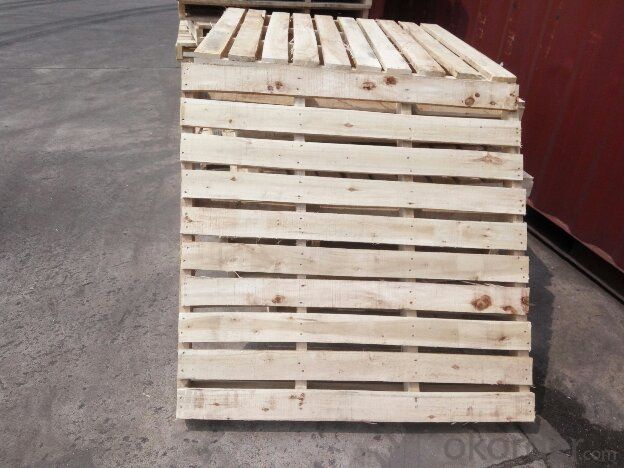
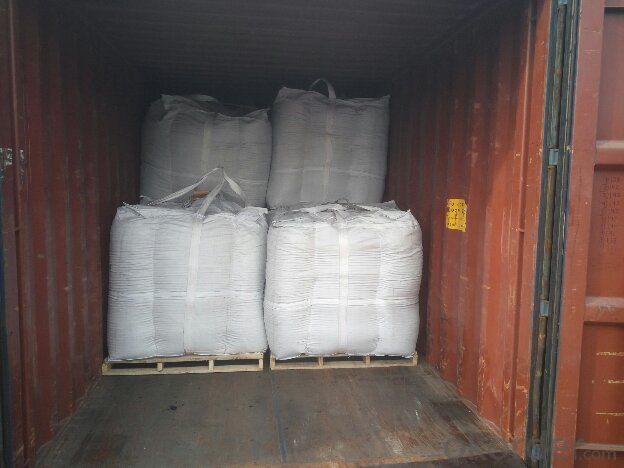
FAQ
1. What is the packing?
In 25kg bag/ In jumbo bags without pallet/ Two jumbo bags with one pallet/ or as customers’ request
2. What is the production capacity?
10 thousand tons per month
3 What is payment term?
Irrevocable LC at sight/ 20% down payment by T/T and 80% against BL copy byT/T/ or to be discussed
4 What is the service?
We will send sample to the third party(CIQ, CCIC, SGS,BV or to be discussed) for checking, and present the test certificate and loading repot of shipment.
- Q: What are carbon credits and how do they work?
- Reducing greenhouse gas emissions through a market-based approach is what carbon credits are all about. The idea is to assign a value to the removal or reduction of one metric ton of carbon dioxide or its equivalent (CO2e) from the atmosphere. These credits represent the right to emit a specific amount of greenhouse gases and can be traded or sold on the carbon market. The main purpose of carbon credits is to create motivation for companies, organizations, or individuals to decrease their emissions. By establishing a price for carbon emissions, it encourages businesses to invest in cleaner technologies and practices to offset their carbon footprint. This ultimately leads to a decrease in overall greenhouse gas emissions, which contributes to the global fight against climate change. To acquire carbon credits, organizations undertake projects that reduce or eliminate greenhouse gas emissions. These projects can involve installing renewable energy sources, improving energy efficiency, planting trees, or investing in clean development mechanisms in developing nations. Independent third parties evaluate and verify each project to ensure its legitimacy and actual reduction in emissions. Once a project is approved and verified, it is given a specific number of carbon credits based on the amount of emissions it has reduced or eliminated. These credits can then be sold on the carbon market to companies or individuals seeking to offset their own emissions. Buyers can use these credits to compensate for their own emissions, effectively neutralizing their carbon footprint. The carbon market facilitates the buying and selling of carbon credits, providing a flexible and efficient approach to addressing climate change. The price of carbon credits can vary depending on supply and demand dynamics, as well as the strictness of emission reduction targets set by governments or global agreements. Overall, carbon credits are crucial in incentivizing emission reduction actions and promoting sustainable practices. They offer a financial mechanism for businesses to invest in cleaner technologies while making a positive contribution to global efforts in tackling climate change.
- Q: What is carbon offsetting in the fashion industry?
- In the fashion industry, carbon offsetting refers to the act of compensating for the greenhouse gas emissions produced during the production, transportation, and disposal of clothing and accessories. This involves investing in projects or activities that reduce or eliminate an equal amount of carbon dioxide (CO2) from the atmosphere, thereby counterbalancing the emissions generated by the industry. Fashion has gained notoriety for its significant role in environmental degradation, with textile production, manufacturing processes, and transportation all contributing to carbon emissions. Carbon offsetting offers a means for fashion brands and companies to take accountability for their carbon footprint and strive towards reducing their environmental impact. There are various methods for implementing carbon offsetting in the fashion industry. One prevalent approach involves supporting renewable energy initiatives, such as wind farms or solar power plants, that generate clean energy and reduce reliance on fossil fuels. By investing in these projects, fashion brands can offset a portion of their emissions by supporting the production of renewable energy, which displaces the need for energy derived from fossil fuels. Another method of carbon offsetting involves reforestation or afforestation projects. Trees play a critical role in absorbing CO2 from the atmosphere, so planting trees or conserving existing forests can help offset emissions. Fashion companies can invest in projects that protect existing forests from deforestation or support initiatives that plant trees in areas affected by deforestation or land degradation. Furthermore, some fashion brands choose to offset their carbon emissions by investing in projects that capture and store carbon dioxide from the atmosphere, such as carbon capture and storage (CCS) technologies. These projects primarily focus on removing CO2 emissions from industrial processes, preventing their release into the atmosphere. It is important to recognize that carbon offsetting should not be viewed as a comprehensive solution to the fashion industry's environmental impact. While it can help mitigate some emissions, it is crucial for brands to prioritize reducing their carbon footprint through sustainable practices. This includes using eco-friendly materials, improving energy efficiency, and implementing circular fashion initiatives. In summary, carbon offsetting serves as a strategy for the fashion industry to compensate for the greenhouse gas emissions generated throughout the supply chain. By investing in projects that reduce or eliminate an equal amount of CO2 from the atmosphere, fashion brands can take strides towards minimizing their environmental impact and working towards a more sustainable future.
- Q: What are the basic structures of iron carbon alloys?
- The symbol is A. The stable austenite has a temperature of 727 DEG C, when the solubility of carbon is 0.77%, the strength, hardness and plasticity of austenite are very good, which is the organization required for high temperature forging or rolling of most steels.Cementite: a metallic compound of iron and carbon with a carbon content of 6.69%. The formula Fe3C is expressed in symbolic Cm. High hardness, poor plasticity, hard and brittle, the number of cementite increases, strength and hardness increase, while plasticity decreases.
- Q: What are the consequences of increased carbon emissions on educational systems?
- Increased carbon emissions have profound consequences on educational systems. One of the major consequences is the negative impact on the health and well-being of students and teachers. Carbon emissions contribute to air pollution, which can lead to respiratory problems, allergies, and other health issues. This, in turn, affects attendance rates and overall student performance. Furthermore, the effects of climate change caused by carbon emissions, such as extreme weather events and rising temperatures, can disrupt educational infrastructure. Schools may be closed or damaged due to hurricanes, floods, or heatwaves, leading to a loss of instructional time and disruption to the learning environment. In addition, increased carbon emissions contribute to the depletion of natural resources, such as water and food, which can have severe consequences for educational systems. In regions heavily reliant on agriculture, climate change can disrupt food production and availability, leading to malnutrition and reduced cognitive development in children. Lack of access to clean water can also impact sanitation in schools, increasing the risk of diseases and impacting students' ability to concentrate and learn. Moreover, the consequences of increased carbon emissions extend beyond physical health and infrastructure. Climate change is a complex global issue that requires an understanding of scientific concepts and critical thinking skills to address. However, inadequate education on climate change and its causes can hinder students' ability to comprehend and respond to this pressing issue. Furthermore, the economic impacts of climate change resulting from increased carbon emissions can strain educational systems. Governments may have to divert resources away from education to address climate-related disasters and their aftermath. Limited funding for education can lead to reduced access to quality education, inadequate facilities, and lower teacher salaries, all of which can negatively impact the overall quality of education provided. In conclusion, increased carbon emissions have wide-ranging consequences on educational systems. From the health and well-being of students and teachers to disruptions in infrastructure and access to resources, the effects of carbon emissions can hinder educational outcomes. Addressing climate change and reducing carbon emissions is crucial not just for the environment but also for the future of education.
- Q: Advantages of carbon fiber
- Carbon fiber axial strength and high modulus, no creep, fatigue resistance, between heat and electrical conductivity between the metal and non metal, low thermal expansion coefficient, good corrosion resistance, low fiber density, good permeability of X ray.
- Q: What is the concept of carbon equivalent? What is the relationship between carbon equivalent and weldability?
- C equivalent =[C+Mn/6+ (Cr+Mo+V) /5+ (Ni+Cu) /15]*100% formula: C, Mn, Cr, Mo, V, Ni, Cu are elements in the steel contentCarbon steel, determine the strength and weldability of the main factors is the carbon content. Alloy steel (mainly low-alloy steel) in addition to all kinds of alloy elements on the strength of carbon steel and welding also plays an important role.
- Q: What are the impacts of carbon emissions on the stability of kelp forests?
- Carbon emissions have significant impacts on the stability of kelp forests. Increased carbon dioxide levels in the atmosphere lead to ocean acidification, which negatively affects the growth and survival of kelp. Acidic conditions hinder the ability of kelp to absorb essential nutrients, weaken their structure, and make them more susceptible to damage from storms and other disturbances. Additionally, rising ocean temperatures associated with carbon emissions can lead to the expansion of harmful algal blooms that compete with kelp for light and nutrients. These combined effects pose a threat to the stability and biodiversity of kelp forests, with potential cascading impacts on the marine ecosystem.
- Q: How does carbon impact the availability of clean drinking water?
- Carbon, primarily in the form of carbon dioxide (CO2), contributes to climate change and alters precipitation patterns. This can lead to increased frequency and intensity of droughts and floods, affecting the availability and quality of clean drinking water. Additionally, carbon-based pollutants from industries and transportation can contaminate water sources, making them unsafe for consumption.
- Q: How is carbon used in the production of construction materials?
- Carbon is used in the production of construction materials through a process called carbonization, where organic materials such as wood, coconut shells, or coal are heated to high temperatures in the absence of oxygen. This results in the removal of other elements and the production of carbon-rich materials like activated carbon or charcoal, which can be used in various construction applications such as concrete production, filtration systems, or as a component in composite materials.
- Q: How can Dungeon Fighter Online's superior furnace rock carbon be obtained?
- Bought in cash. You can go to the mall to have a look.
Send your message to us
Foundry Coke size 80-150MM for Steel Plant
- Loading Port:
- Dalian
- Payment Terms:
- TT OR LC
- Min Order Qty:
- 21.6
- Supply Capability:
- 1016 m.t./month
OKorder Service Pledge
OKorder Financial Service
Similar products
Hot products
Hot Searches
